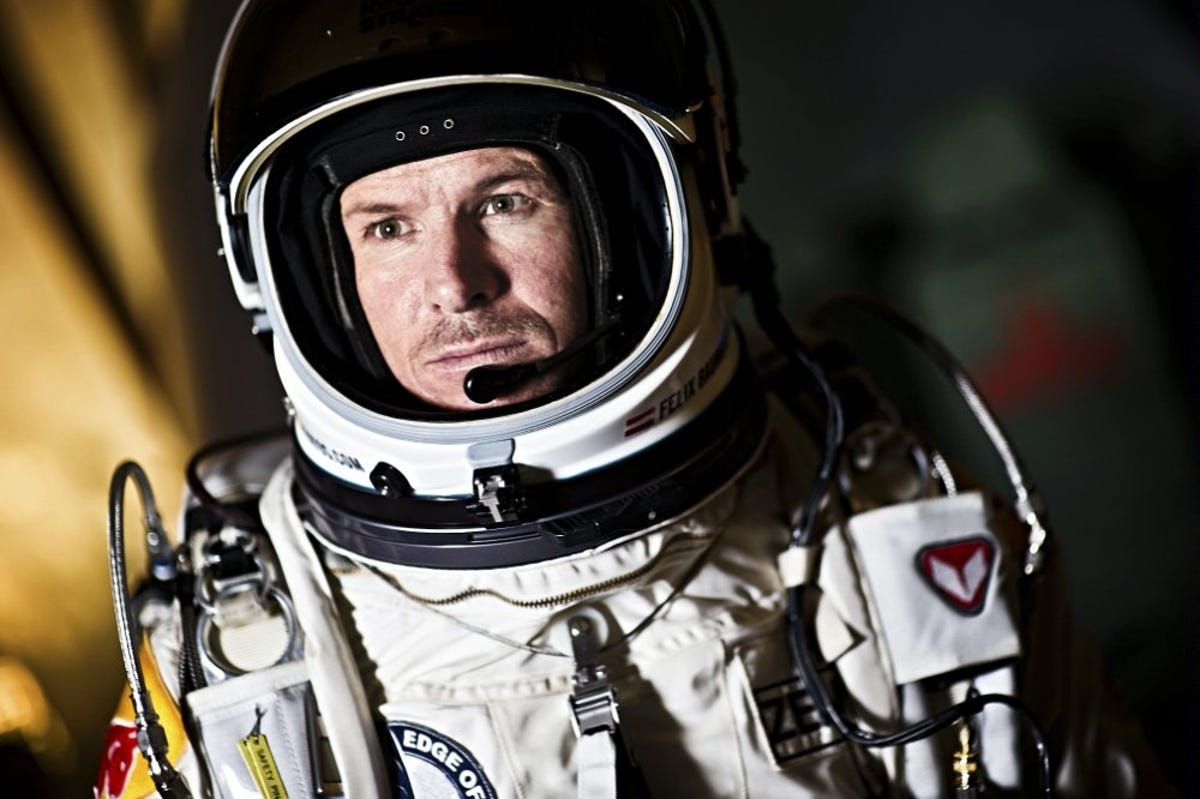Felix Baumgartner's historic skydive (pictures)
This was no recreational skydive. Baumgartner ascended to a record-setting altitude in a quest to make the fastest freefall ever.

Felix Baumgartner
The mission ended at 11:17 a.m. PT today when Baumgartner landed. At first, Baumgartner's Red Bull Stratos team said that the unofficial top speed of the freefall was 1,137 kilometers per hour, or 706 miles per hour. Later, they raised that to 1,342.8 km/h, or 834.4 mph.
The team's expectation was that 690 mph would be sufficient to get Baumgartner to Mach 1 -- a somewhat variable standard, depending on elevation, air density, and other factors. But that would handily beat the record for the fastest freefall, which has stood at 614 mph for a half-century.
Baumgartner seems clearly to have set a record for the highest manned balloon flight and the highest freefall, having jumped from at altitude of 128,097 feet. The duration of the freefall, 4 minutes and 19 seconds, was just shy of the record (4:36).
The ascent via live stream
The balloon ascends
In the capsule at 127K feet
Ready to jump
He jumps!
Felix in freefall
It's a long way down
The parachute deploys
Red Bull Stratos team
Kittinger, who's serving as an adviser to Baumgartner, knows a little something about this rare kind of skydive. In August 1960, he jumped from 102,800 feet (19.5 miles) and hit a top speed of about 614 mph, at at time when the Pentagon and the still very young NASA were trying to get a handle on how humans would be affected by high-altitude atmospheric flight and space travel.
Cameras aplenty
Baumgartner in his capsule
Cramped quarters
A disappointing delay
Balloon, partially inflated
Balloon on the tarmac
Entering the capsule
Joe Kittinger today
Joe Kittinger ca. 1960
"When I jumped," Kittinger wrote in Plane & Pilot magazine a couple years ago. "I was thinking simply that it was the beginning of a test. I had done it a hundred times in an altitude chamber and a thousand times in my mind, so I was prepared and confident. But after I jumped, I rolled over and looked up, and there was the balloon just roaring into space. I realized, however, that the balloon wasn't really roaring into space -- I was going down at a fantastic rate! At about 90,000 feet, I reached approximately 614 mph. At that point, my altimeter was unwinding very rapidly, but there was no sense of speed because we determine speed visually when we see something go flashing by, and there were no visual cues."

